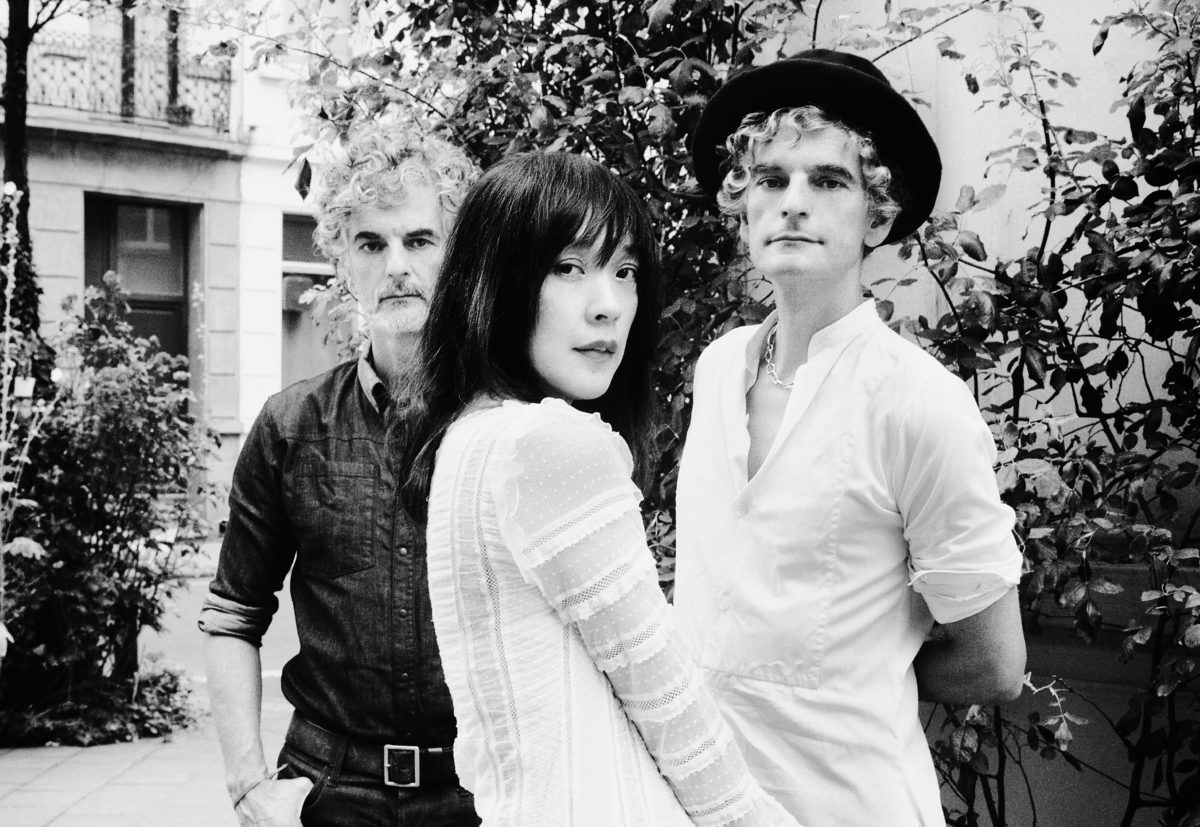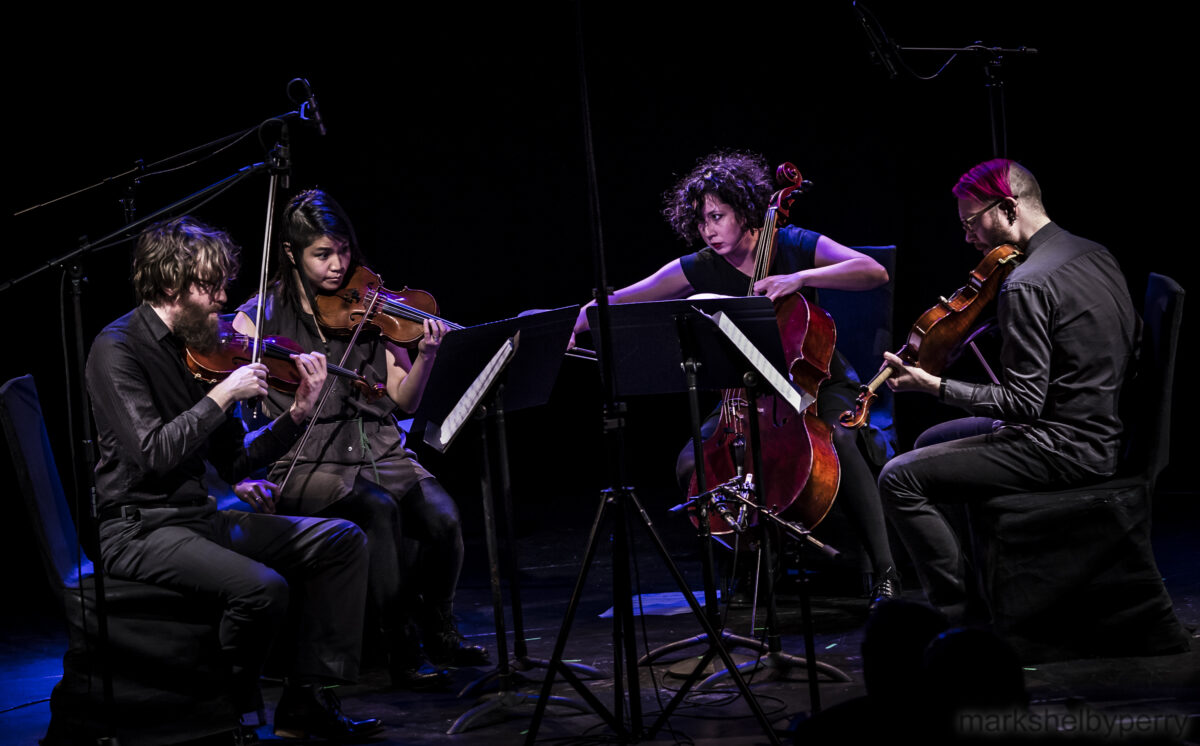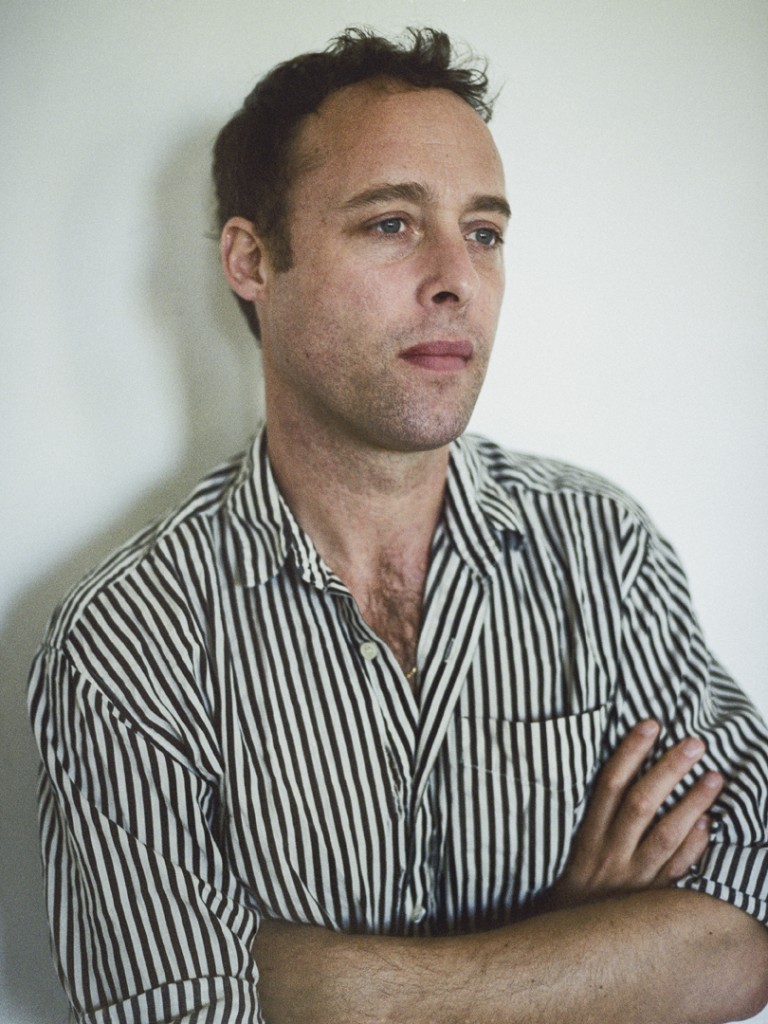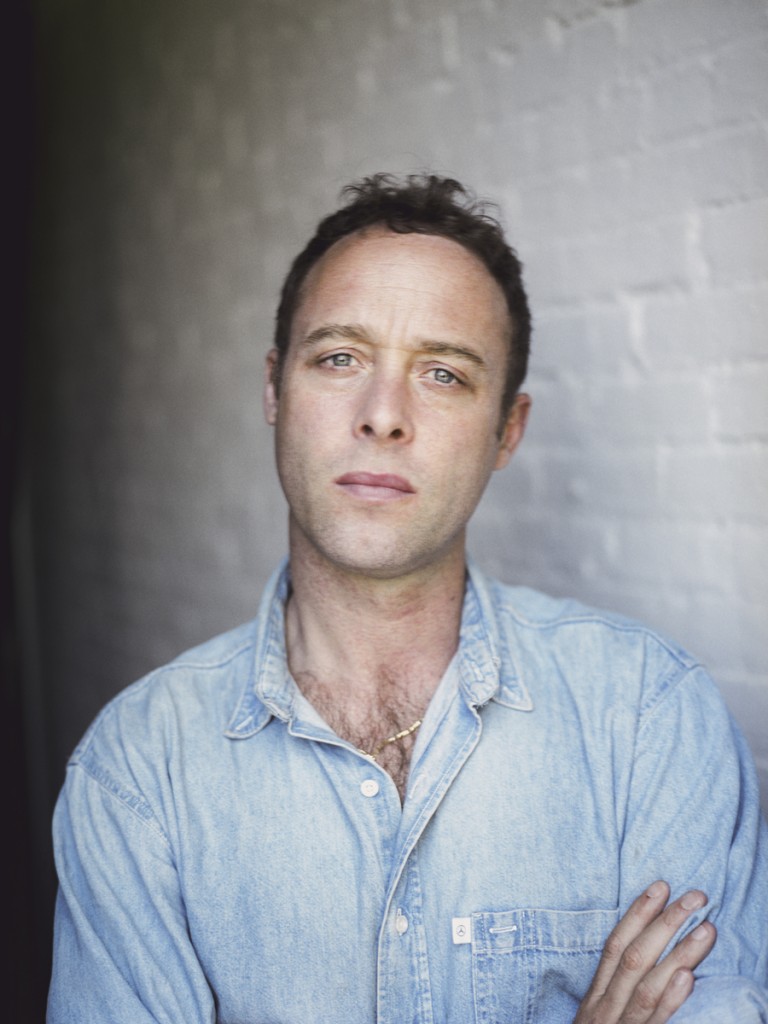LPR Presents at Co-Cathedral of St. Joseph
Oct
11
Tue October 11th, 2016
8:00PM
Co-Cathedral of St. Joseph
Minimum Age: 18+
Doors Open: 7:00PM
Show Time: 8:00PM
Event Ticket: $27.50
Day of Show: $35
*this event will take place at: Co-Cathedral of St. Joseph, 856 Pacific Street, Brooklyn NY*
Blonde Redhead is excited to announce a new collaboration with the esteemed American Contemporary Music Ensemble. This fall, the two innovative groups will perform Blonde Redhead’s seminal 2004 album “Misery is a Butterfly” in its entirety, as well as select songs from the group’s extensive catalogue. These select performances will be the North American debut of new arrangements and a first for the group performing in a larger format with strings.
New York City based Blonde Redhead has always been a band that innovates with each album. Formed in 1993, Kazu Makino (vocals, rhythm guitar) and twin brothers Simone and Amedeo Pace (drums and lead guitar/vocals, respectively), challenge themselves with each recording situation, and the results have been stunning every time. Their music is always inspired by the same emotions, but their tastes and the ways they choose to execute those emotions are constantly evolving. Their ninth studio album, Barragán, was released in September 2014.
ACME was honored by ASCAP during its 10th anniversary season in 2015 for the “virtuosity, passion, and commitment with which it performs and champions American composers.” NPR calls them “contemporary music dynamos,” and The New York Times describes ACME’s performances as “vital,” “brilliant,” and “electrifying.” Led by cellist and Artistic Director Clarice Jensen, ACME has played at leading venues such as Carnegie Hall, BAM, The Kitchen, UCLA’s Royce Hall, Sydney Opera House, Melbourne Recital Hall, All Tomorrow’s Parties and Big Ears. ACME can be heard on Deutsche Grammophon, New World, New Amsterdam, and Butterscotch Records, and will release its first portrait album in spring 2017 on Sono Luminus.

Ticketing Policy
Please note: LPR does not print paper tickets. Tickets can only be claimed by checking in at will-call at the Co-Cathedral of St. Joseph once doors have opened on the day of the show. The original ticket buyer must present a valid photo ID at that time. Will call name changes will not be permitted for this performance.
Blonde Redhead

Moving from Sonic Youth-like art punk to eclectic pop over the course of their decades-long career, Blonde Redhead remained one of indie rock’s most creative acts. The band formed in 1993 after Japanese art students Kazu Makino and Maki Takahashi randomly met Italian twin brothers Simone and Amedeo Pace at an Italian restaurant in New York. (The name was taken from a song by the ’80s no wave band DNA.) With Makino and Amedeo on guitars and vocals, Simone on drums, and Takahashi on bass, the band’s chaotic, artistic rock caught the attention of Sonic Youth drummer Steve Shelley, who produced and released the band’s debut album, Blonde Redhead, on his Smells Like Records label. Shortly after the album’s release, Takahashi left the band. The remaining members continued as a trio, releasing a second album, La Mia Vita Violenta, on Shelley’s label in 1995. For their 1997 release, Fake Can Be Just as Good, recorded for Touch & Go, the trio was joined by guest bass player Vern Rumsey from Unwound. By 1998, the band eliminated bass and scaled back to guitars, drums, and vocals for In an Expression of the Inexpressible. Melody of Certain Damaged Lemons and the Melodie Citronique EP followed two years later. The band’s first for 4AD, Misery Is a Butterfly, was released in spring 2004. For 2007’s 23, the group opted for a mix of dream pop and delicate electronic textures. Three years later, Blonde Redhead delivered Penny Sparkle, a more stripped-down, even more electronic-leaning set of songs the band recorded in New York and Stockholm with Alan Moulder, Van Rivers, and the Subliminal Kid. In 2014, Blonde Redhead returned with Barragán, featuring production from Drew Brown (Beck, Stephen Malkmus, Radiohead). The band revisited its early days in 2016 with the Numero Group box set Masculin Feminin, which collected Blonde Redhead and La Mia Via Violenta along with demos, singles, and radio performances from that era. That year also saw the release of Freedom of Expression on Barragán Hard, a collection of Barragán remixes including contributions by Deerhoof, Van Rivers, Nosaj Thing, and Connan Mockasin. Blonde Redhead returned with new music in 2017 in the shape of the EP 3 O’Clock, which they released on their own Asa Wa Kuru Records.
ACME

Since 2004, led by cellist and artistic director Clarice Jensen, the American Contemporary Music Ensemble (ACME) has risen to the highest ranks of American new music through a mix of meticulous musicianship, artistic vision, engaging collaborations, and unwavering standards in every regard. The membership of the amorphous collective includes some of the brightest stars in the field. NPR calls them “contemporary music dynamos,” and Strings reports, “ACME’s absorbing playing pulsed with warm energy. . . Shared glances and inhales triggered transitions in a flow so seamless it seemed learned in a Jedi temple.” ACME was honored by ASCAP during its 10th anniversary season in 2015 for the “virtuosity, passion, and commitment with which it performs and champions American composers.”
The ensemble has performed at leading international venues including Lincoln Center, Carnegie Hall, BAM, The Kennedy Center, Washington Performing Arts, UCLA’s Royce Hall, Stanford Live, Chicago’s Millennium Park, Duke Performances, The Satellite in Los Angeles, STG Presents in Seattle, Melbourne Recital Hall and Sydney Opera House in Australia, and at festivals including the Sacrum Profanum Festival in Poland, All Tomorrow’s Parties in England, Auckland Arts Festival in New Zealand, Summer Nostos Festival in Greece, Boston Calling, and Big Ears in Knoxville, TN. ACME has performed Max Richter’s Sleep, an eight-hour lullaby for a sleeping audience, with him around the world, including at the Great Wall of China; on the piers of Auckland, New Zealand; in Hobart, Tasmania; at the Sydney Opera House; and in LA’s Grand Park, among others.
World premieres given by ACME include Clarice Jensen’s evening-length piece The Exaltation of Inanna for string quartet, guitar, and four singers; Ingram Marshall’s Psalmbook; Jóhann Jóhannsson’s Drone Mass (commissioned by ACME in 2015); Caroline Shaw’s Ritornello; Phil Kline’s Out Cold; William Brittelle’s Loving the Chambered Nautilus; Timo Andres’ Senior and Thrive on Routine; Caleb Burhans’ Jahrzeit; and many more. In 2016 at The Kitchen, ACME premiered Clarice Jensen’s transcription of Julius Eastman’s The Holy Presence of Joan d’Arc for ten cellos, the score of which had been lost since the premiere in 1981. Jensen transcribed a recording of the work to recreate the score.
ACME’s collaborators have included The Richard Alston Dance Company, Wayne McGregor’s Random Dance, Gibney Dance, Satellite Ballet, Meredith Monk, Jóhann Jóhannsson, Max Richter, actress Barbara Sukowa, filmmaker Jim Jarmusch, Blonde Redhead, Grizzly Bear, Low, Matmos, Micachu & The Shapes, Jeff Mangum, A Winged Victory for the Sullen, Roomful of Teeth, Lionheart, and Theo Bleckmann.
In March 2022, ACME released the world premiere recording of Jóhann Jóhannsson’s contemporary oratorio Drone Mass on Deutsche Grammophon, with Theatre of Voices led by Paul Hillier. Gramophone included the album on its list of Best New Classical Recordings. Of the album, Gramophone wrote, “Since Jóhann Jóhannsson’s death in 2018 at the age of only 48, his label DG has done much to promote the Icelandic composer’s posthumous reputation by releasing several soundtrack albums and retrospective collections. One nevertheless senses there exists among the many musical cues and film themes a work of real vitality, power and significance – a jewel in the crown of Jóhannsson’s creative achievements. Drone Mass may well be that work. On one level, this contemporary oratorio for voices, string quartet and electronics – commissioned by the American Contemporary Music Ensemble (ACME) led by cellist Clarice Jensen, who are superb on this recording – is typically Jóhannssonian in its uncanny juxtaposition of the strange with the familiar and its rich interplay of multiple meanings.”
ACME’s discography also includes its first portrait album, Thrive on Routine, on Sono Luminus; Jóhann Jóhannsson’s Orphée and Max Richter’s Sleep, both on Deutsche Grammophon; Fantasias with thereminist Carolina Eyck on Butterscotch Records; Joseph Byrd: NYC 1960-63, the first commercial recording of the music of rediscovered American Fluxus composer Joseph Byrd, on New World Records; William Brittelle’s electro-acoustic chamber work Loving the Chambered Nautilus, and Jefferson Friedman’s On In Love with vocalist Craig Wedren, both on New Amsterdam Records.
Luke Temple

Luke Temple official site | Luke Temple on Facebook | Luke Temple on Twitter | Luke Temple on Instagram
In the winter Luke Temple moved into a cottage, a small one, in upstate New York. The snow fell quietly. He had frozen blueberries and bread and eggs and Coors Original. He sang and drank and played and drank and ate and shoveled snow and when the snow melted and the roads cleared he had his friends. Eliot Krimsky of Glass Ghost (keyboards) and Mike Johnson of Dirty Projectors (drums) dug into Luke’s hut and together they built a fire. Luke called it Good Mood Fool.
Originally from Cape Anne, Massachusetts, Luke moved to the North West, sleeping rough in the woods, working in a candy store and as a janitor at a suburban mall. While in Seattle Luke met some people headed down the coast. All of his aimlessness lasted a year and half before Luke had had enough. He enrolled in school of the Museum of Fine Arts and spent five years painting portraits, after which Luke moved to New York and worked as a muralist and plasterer. As painting drifted from the foreground little songs started to emerge. He tried them out at the famous Sidewalk Café Monday open mic and the people there liked it.
After recording two critically acclaimed albums for Mill Pond, to little commercial reception, Luke was at the point of quitting a career in music. In 2008, feeling free in his new state, he made what would become the first Here We Go Magic album, forming the band and releasing the self-titled debut in 2009. Positive critical and commercial response to the record kept Luke busy through touring and recording two more full lengths and an EP. Since Here We Go Magic’s 2012 release, the Nigel Gordich-produced A Different Ship, Luke has returned to his original solo ideas.
In a sense Good Mood Fool is an extension of the first self-titled Here We Go Magic record. It was recorded with the same sense of freedom and joy. The meat of the record finds Luke taking a sharp turn in order to keep himself interested. First single “Katie” is a prime slice of mid-80s intelligent pop, almost So-era Peter Gabriel in its rhythms and sound. Meanwhile, “Florida” is a blue-eyed soul hit, a lazy sunny evening of summer beauty. Good Mood Fool draws from myriad influences, from the hushed soulful wail of Curtis Mayfield to the dense harmonies of Gill Evans and the Bulgarian Women’s Choir. It is meant to be clear in production and in content, hiding nothing.
Photo credit: Dusdin Condren


